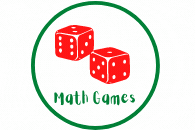Converting Decimals to Fractions Worksheet
Decimals and fractions are fundamental concepts in mathematics. While decimals represent parts of a whole in decimal form, fractions represent parts of a whole as ratios. Understanding how to convert decimals to fractions is a crucial skill for students and professionals alike.
-
 Decimal Worksheets
Decimal Worksheets - Complete the sequence worksheet
- Writing words in decimals handout
- Fractions to decimals worksheet
- illustrated decimals worksheet
- Converting Fractions to decimals worksheet 1
- Converting Fractions to decimals worksheet 2
- Converting Fractions to Percentage
- Converting percentage to decimals
-
 Decimals Games
Decimals Games-
 Decimals Quizzes
Decimals Quizzes - Addition of decimal numbers quiz
- Decimals - completing the sequence quiz
- Fractions to Decimals quiz
- Illustrated decimals exercise test
- Decimals multiplied by 10 to 100 quiz
- Decimals multiplied by decimals quiz
- Decimals to whole numbers
- Decimals multiplied by single numbers quiz
- Decimals Sequence quiz
- Fractions to Decimals Interactive Quiz Exercise
- Percentages to Decimals Quiz
-
Understanding Decimals and Fractions
Decimals are numbers expressed in the base-10 system, often separated by a decimal point. For example, 0.5, 3.14, and 7.89 are decimals. On the other hand, fractions represent parts of a whole or a ratio of two numbers. Examples of fractions include ½, ¾, and 5/6.
Why Convert Decimals to Fractions?
Converting decimals to fractions can be useful for several reasons:
-
Better Understanding: Fractions often provide a clearer understanding of the relationship between numbers, especially for those who find fractions more intuitive than decimals.
-
Comparing Quantities: Fractions can make it easier to compare quantities, especially when dealing with fractions of a whole.
-
Exactness: In some cases, expressing a value as a fraction can provide an exact representation that a decimal cannot. For example, 1/3 is an exact representation, while 0.333... (repeating decimal) is an approximation.
-
Mathematical Operations: Fractions can be easier to work with in certain mathematical operations, such as addition, subtraction, multiplication, and division, especially when dealing with fractions themselves.
-
Simplification: Fractions can often be simplified to their lowest terms, which can make calculations easier and results clearer.
Overall, converting decimals to fractions can be beneficial in various mathematical contexts, providing clarity, exactness, and ease of manipulation in calculations.
Methods to Convert Decimals to Fractions
There are different methods to convert decimals to fractions, depending on whether the decimal is terminating or repeating. Terminating decimals have a finite number of digits after the decimal point, while repeating decimals have a recurring pattern.
To convert a terminating decimal to a fraction, simply write the digits of the decimal as the numerator and the place value of the last digit as the denominator. For example, 0.75 can be written as 75/100, which simplifies to 3/4.
Converting repeating decimals to fractions involves recognizing the repeating pattern and expressing it as a fraction. For instance, 0.333... can be represented as 1/3.
Practice Exercises
Let's practice converting decimals to fractions:
- Convert 0.6 to a fraction = 3/5
- Convert 0.25 to a fraction = 1/4
- Convert 0.333... to a fraction = 1/3
Tips for Converting Decimals to Fractions
When converting decimals to fractions, it's essential to pay attention to patterns and simplify the fractions whenever possible. Additionally, understanding the relationship between decimals and fractions can aid in the conversion process.
Real-Life Examples
Decimal to fraction conversion finds applications in various real-life scenarios, such as cooking measurements, financial calculations, and engineering designs. Being able to convert between decimals and fractions accurately can simplify tasks and improve accuracy.
Advanced Techniques
In advanced mathematics, decimal to fraction conversion becomes more intricate, especially when dealing with complex decimals or repeating patterns. However, mastering the fundamental concepts and techniques lays the groundwork for tackling more complex problems.
Conclusion
In conclusion, converting decimals to fractions is a valuable skill with numerous practical applications. By understanding the methods, practicing regularly, and applying the concepts to real-life situations, individuals can enhance their mathematical proficiency and problem-solving abilities.
FAQs
-
How do you convert a repeating decimal to a fraction? To convert a repeating decimal to a fraction, identify the repeating pattern and express it as a fraction. For example, 0.333... can be represented as 1/3.
-
Can all decimals be converted to fractions? No, not all decimals can be converted to fractions. Terminating decimals and repeating decimals have specific methods for conversion, but non-repeating, non-terminating decimals cannot be precisely represented as fractions.
-
Why is it important to understand decimal to fraction conversion? Understanding decimal to fraction conversion is crucial for various mathematical calculations, including simplifying operations, accurately representing values, and solving real-life problems.
-
Are there any shortcuts for converting decimals to fractions? While there are no universal shortcuts, recognizing common patterns and simplifying fractions can expedite the conversion process. Practicing regularly also improves efficiency.
-
How can I practice decimal to fraction conversion effectively? Practice converting decimals to fractions using a variety of examples, including terminating decimals, repeating decimals, and real-life scenarios. Additionally, seek out online resources, worksheets, and exercises to reinforce learning.
 This exercise will help kids practice Math in a fun way. Kids related to games very well. From preschool / kindergarten, first grade to sixth graders levels of math games. There are games for the following topics:
This exercise will help kids practice Math in a fun way. Kids related to games very well. From preschool / kindergarten, first grade to sixth graders levels of math games. There are games for the following topics:
The games include among other : memory games, Walk the plank, Fling the Teacher, En Garde Duel, Basketball Game, Penalty Shoot and more.
 These worksheets are printable PDF exercises of the highest quality. Writing reinforces Maths learnt. These worksheets are from preschool, kindergarten, first grade to sixth graders levels of maths. The following topics are covered among others:
These worksheets are printable PDF exercises of the highest quality. Writing reinforces Maths learnt. These worksheets are from preschool, kindergarten, first grade to sixth graders levels of maths. The following topics are covered among others:
 Ever wondered how to teach maths to kids as a teacher or parent? Simply let them watch our vividly presented videos. These videos cover a number of math topics and simply teach the lesson. The good thing is that they are videos which means they can be watched over and over again. We even have ipod compatible videos along these topics : Lessons to teach Addition, subtraction, Geometry, Comparison, Algebra, Shapes, Time, Fractions, Decimals, Sequence, Division, Metric system, Logarithms, ratios, probability, multiplication and more>>>
Ever wondered how to teach maths to kids as a teacher or parent? Simply let them watch our vividly presented videos. These videos cover a number of math topics and simply teach the lesson. The good thing is that they are videos which means they can be watched over and over again. We even have ipod compatible videos along these topics : Lessons to teach Addition, subtraction, Geometry, Comparison, Algebra, Shapes, Time, Fractions, Decimals, Sequence, Division, Metric system, Logarithms, ratios, probability, multiplication and more>>>
 Math Quizzes Online - Addition, subtraction, Geometry, Comparison, Algebra, Shapes, Time, Fractions, Decimals, Sequence, Division, Metric system, Logarithms, ratios, probability, multiplication
Math Quizzes Online - Addition, subtraction, Geometry, Comparison, Algebra, Shapes, Time, Fractions, Decimals, Sequence, Division, Metric system, Logarithms, ratios, probability, multiplication
These quizzes range from multiple choice math quizzes, gap fill quizzes, matching exercises, hotspot quizzes with graphics and more for interactive math practice.

